Visiting TATE Modern! - Path through free displays in Boiler House building -
Hi steemians, yesterday I visited Tate Modern ! (for those who do not know it, it's this huge museum located in a former power plant, and the most visited modern art museum in the world.)

fonte
I headed to the Boiler House building, where its Displays highlight different approaches to art from 1900 to now. They include works by very important modern artists, like Pablo Picasso, Salvador Dalì and Andy Warhol.
In this article I will show you some works that I particularly appreciated, and I will guide you through these displays.
Ok, it's time to start!
Let's start with the Start Display, which introduces us to some of the best-loved artworks in the Tate collection.
All the rooms in this Display are linked by a focus on colour. And immediately we are asked for some reflections.
Do we all see colours in the same way? Can colours remind us of a particular place or time? Or can colour be an idea?
I think that yes, the color, like a smell or something else tied to a strong sensory experience, can remind us of a certain place or situation. And that the colors, or rather our vision of them, being only our ability to ditinguere objects based on the wave of light, can not be an idea in itself, therefore live independent, but must necessarily be linked to a experience and sensory perception.
I'll give you an example:
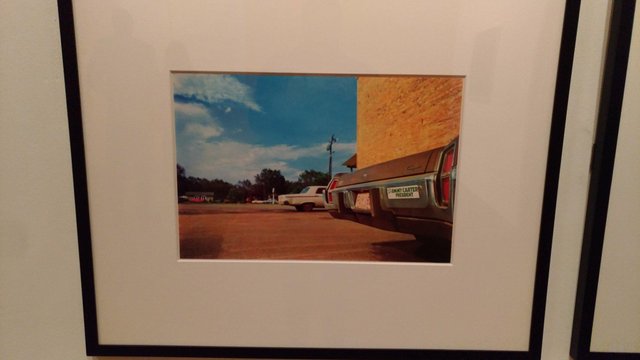
This was a picture shown in the first room, and both the colors and the images remind me of the period I lived in California. For others, he can remember something completely different. But this is not the important thing. The important thing is that these colors evoke emotions in the person who observes them.
The first work that I really appreciated in this display, is by H. Matisse:
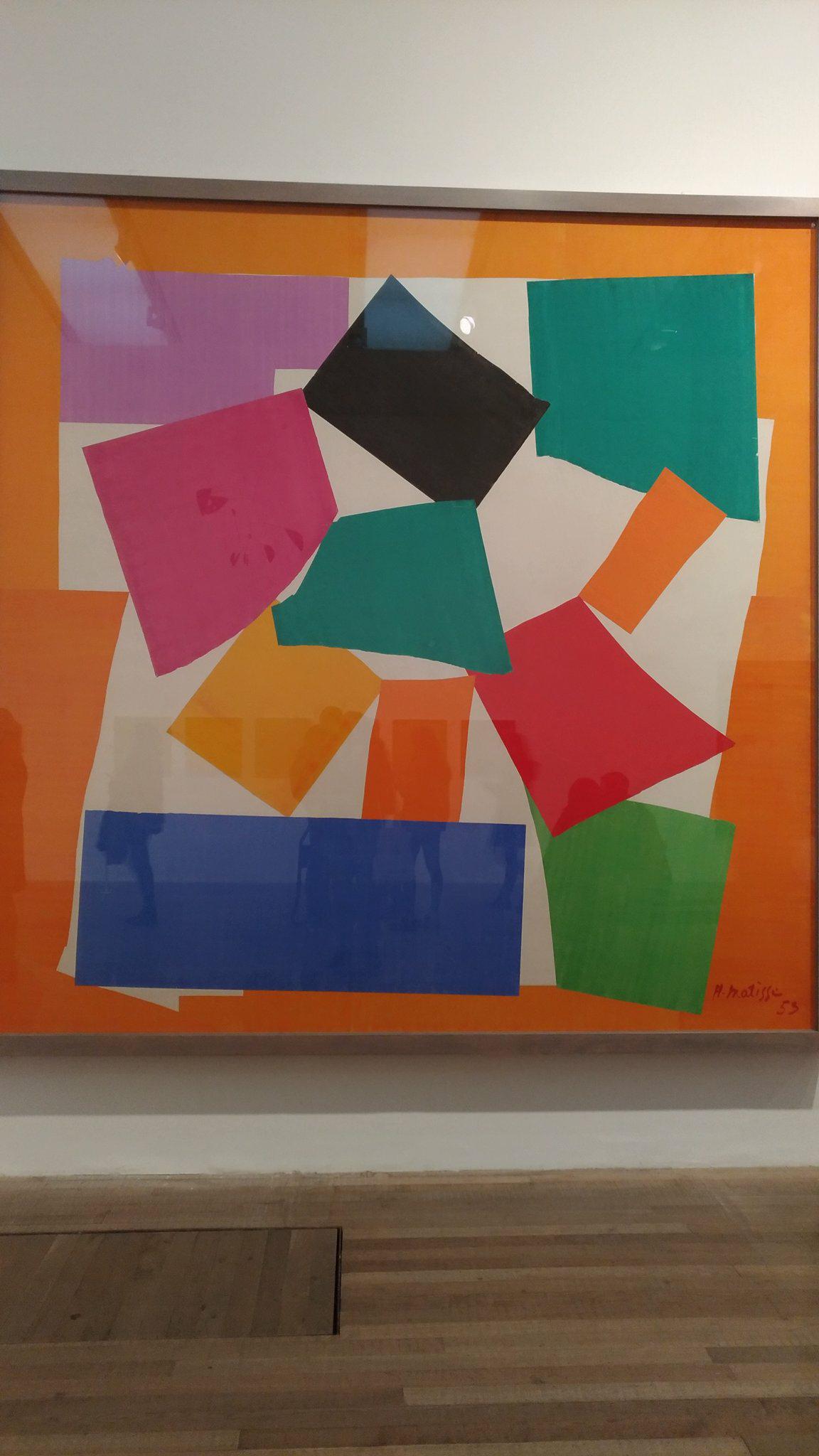
H. Matisse, The Snail 1953
Also interesting is the story of this work, and many others in its last period of activity. Ill health made difficult for him to paint, so he started 'painting with scissors', cutting painted paper into shapes, and is assistants move the papers according to Matisse's directions :)
The other work that i wanna show to you guys, is from one of my favourite artists of all time, W. Kandinsky, the father of the abstract art:
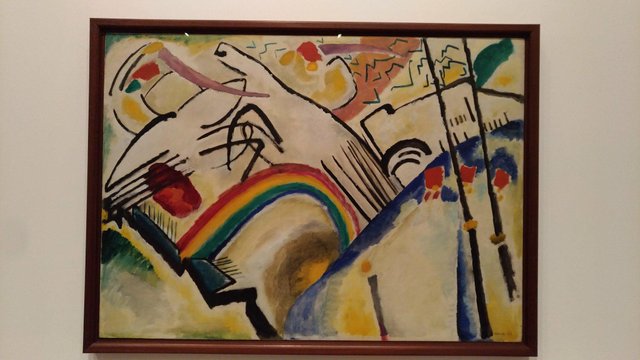
W. Kandinsky, Cossacks 1910-11
Here, you can recognise the "Cossacks" of the title, from their orange hats. However Kandinsky thought that paintings did not need to represent the real world, he felt that he could expresse emotions through the way colours and lines were arranged in a painting. Can you feel it?
The next Collection Display is called "In the studio", and investigates the processes artists use to make artworks, and how our responses are integral to the piece. Here are depictions of artists’ studios as well as abstract works that draw attention to the complex nature of perception.
Here are some works that I particularly liked.
The first one is still from Matisse:
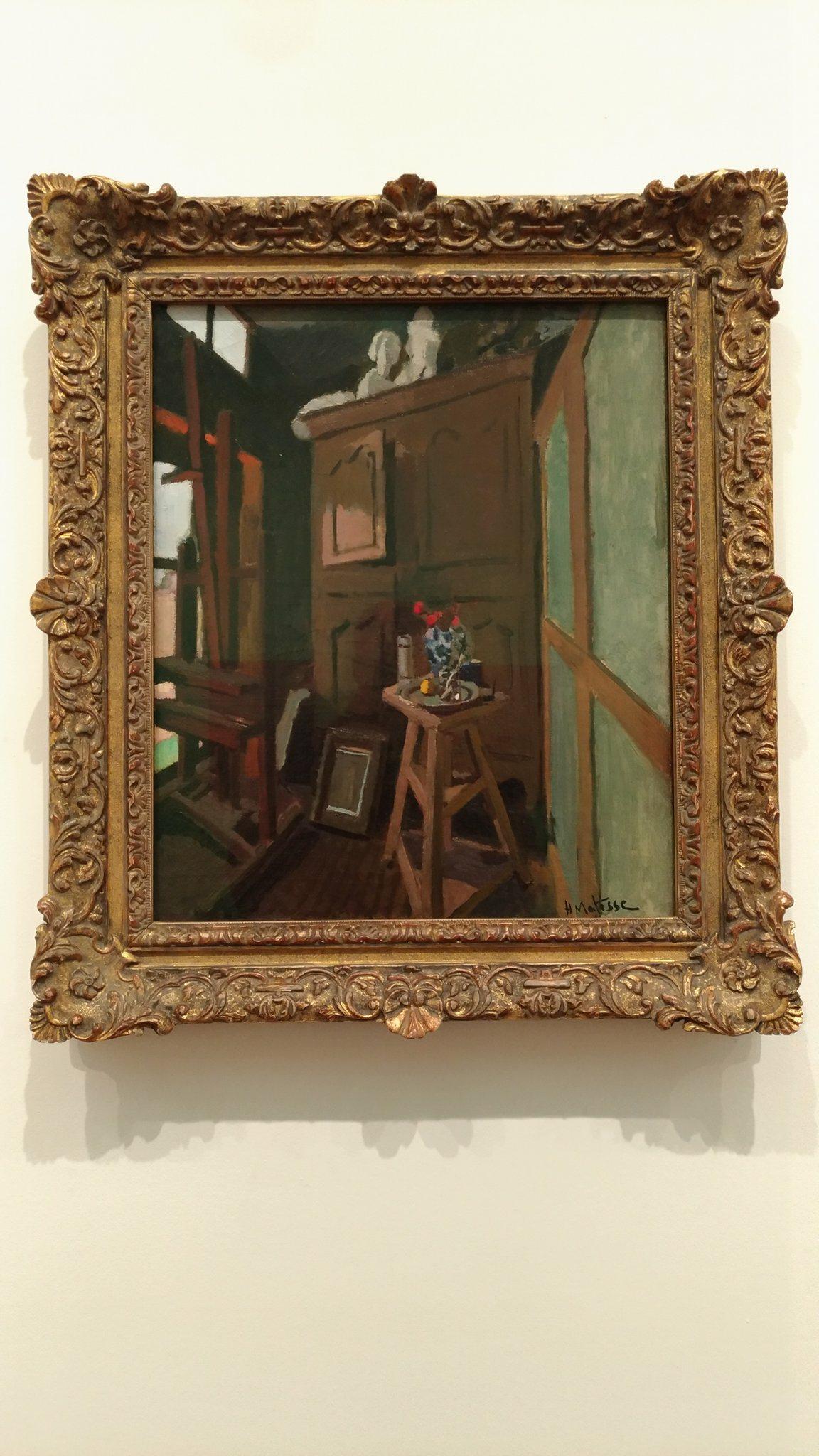
H. Matisse, Studio Interior 1903-04
Here we can see a corner of the artist's apartment in Paris. Much of his work in this period focuses on subject matter relating to his studio.
The next one is from Pablo Picasso:
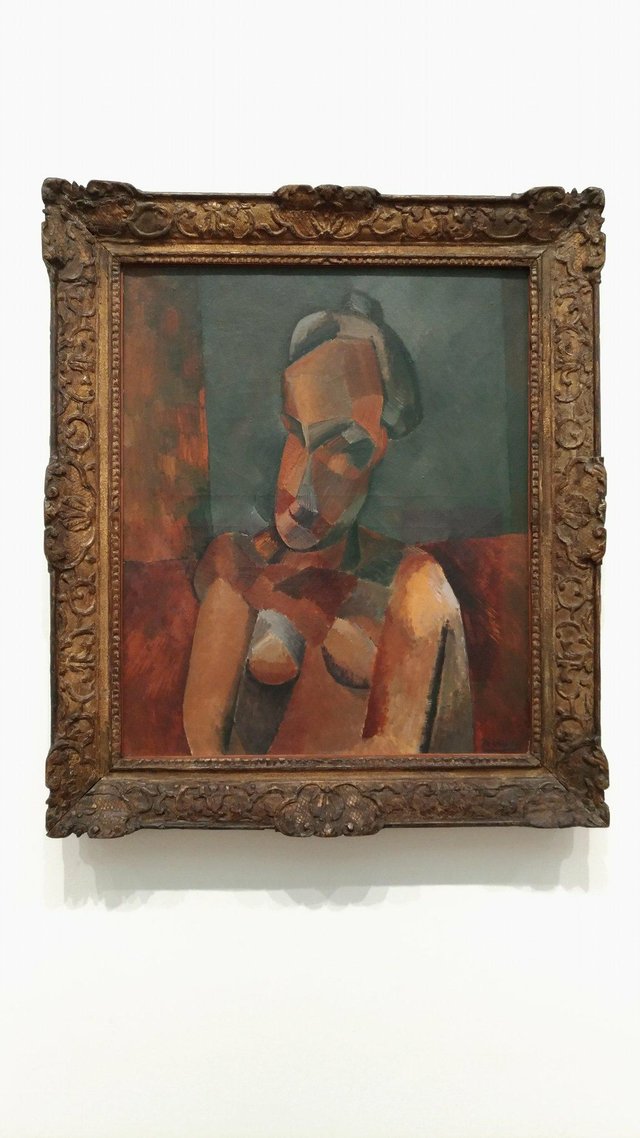
P. Picasso, Head of a Woman (Fernande) 1909
This sculpture is of his companion Fernande Olivier. Its surface relates the work to his cubist paintings of the same period.
The next one is from Monet, and it's incredible:
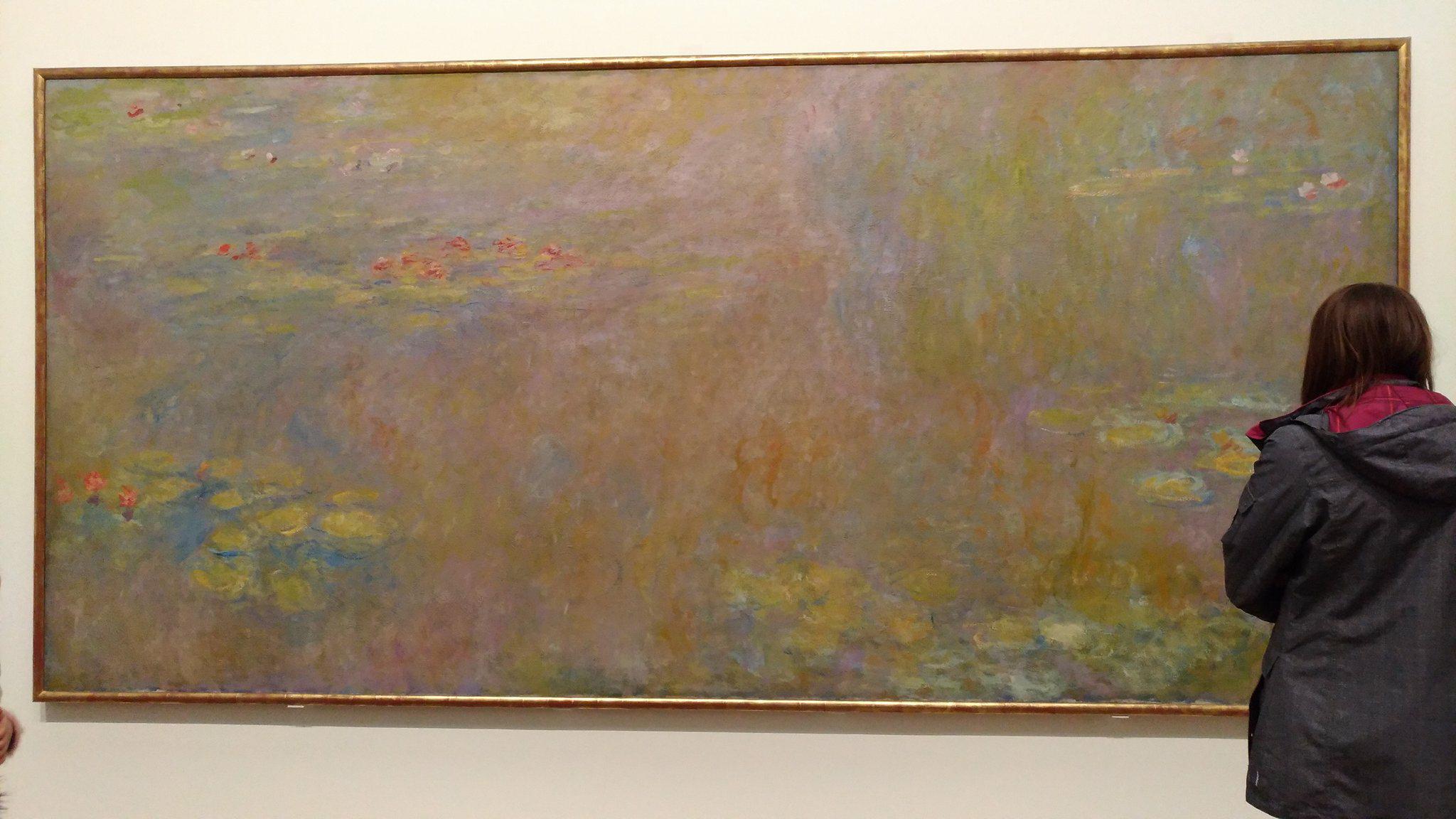
C. Monet, Water-Lilies after 1916
In the 1890s the garden became an 'outside studio' for Monet, and the water-lilies floating on the surface of the pond became the principal motif of his later paintings.
The next artist who impressed me a lot is Mark Rothko.
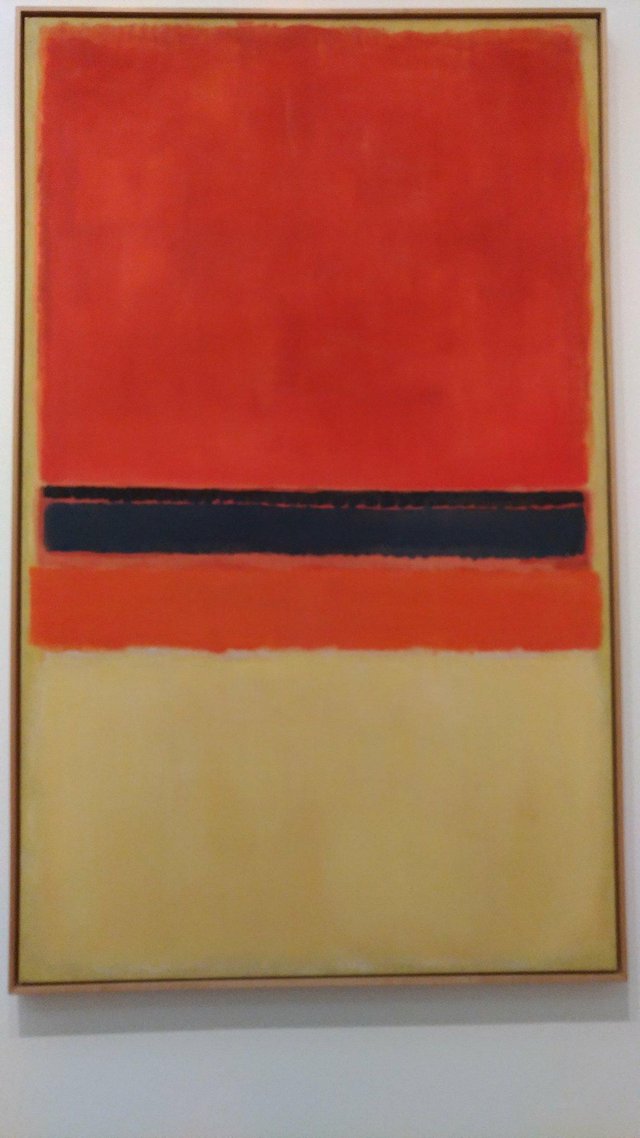
M. Rothko, Untitled 1954
Here the artist developed an approach to abstract painting where rectangular forms are arrenged into a vertical composition. The edges of these forms are often imprecise, sometimes merging into each other.
The next work I present is probably my favorite of all the displays. His concept and purpose impressed me deeply, and made me think a lot.
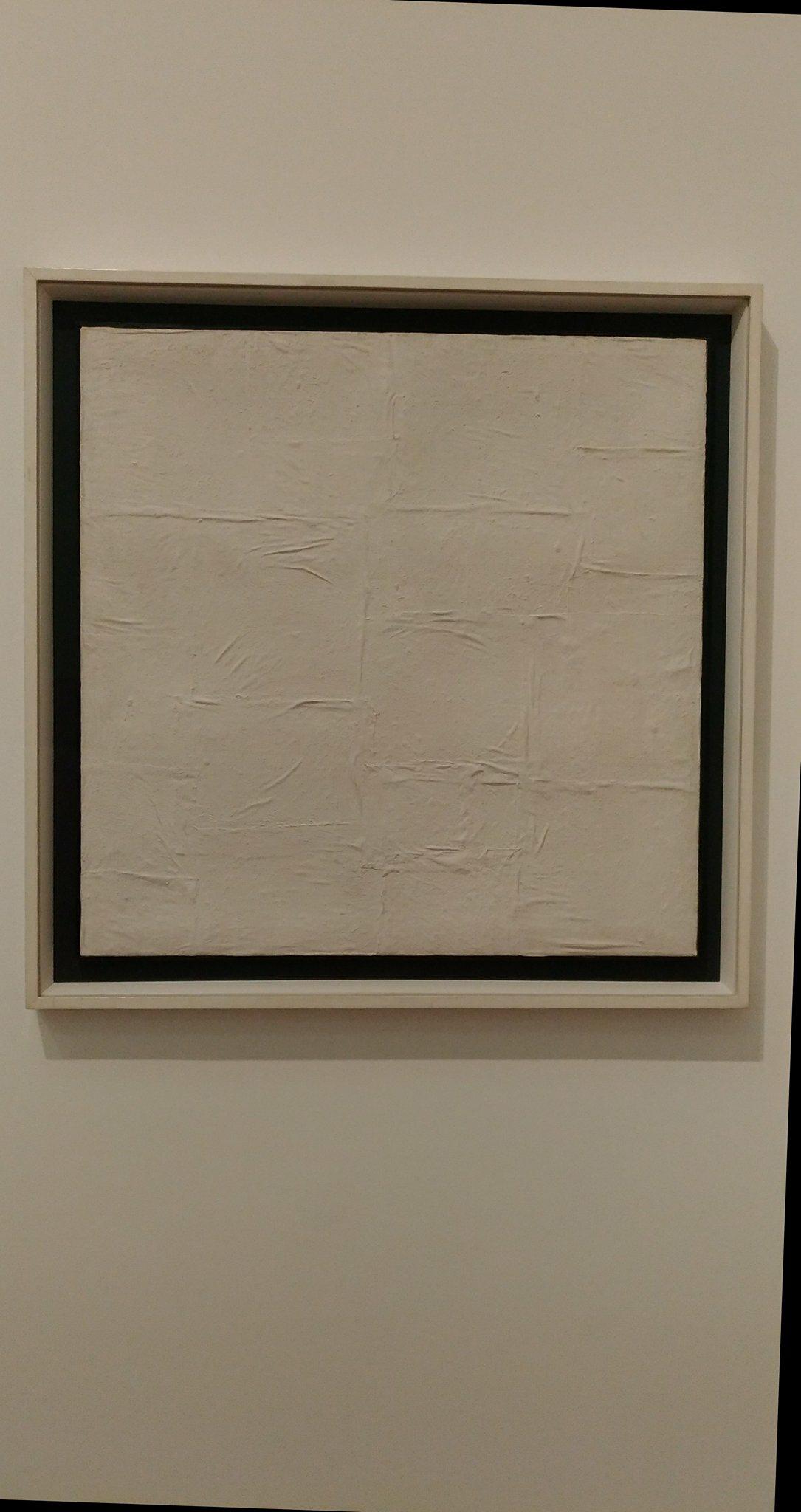
P. Manzoni, Achrome 1958
Looking at it like this, a completely white surface, the real understanding of the work is perhaps difficult. The artist's intent is to remove from the surface anything superfluous and all interpretative possibilities are excluded. He began to soakin his canvases in kaolin, a clay used in making porcelain. This clay eliminated colour to the point of the desired 'nothingness'. Impressive.
Now let's move on to the room where Surrealism is concerned. This section includes works of members of the original Paris-based group. They were inspired by dreams and the unconscious mind.
The first work is by René Magritte:
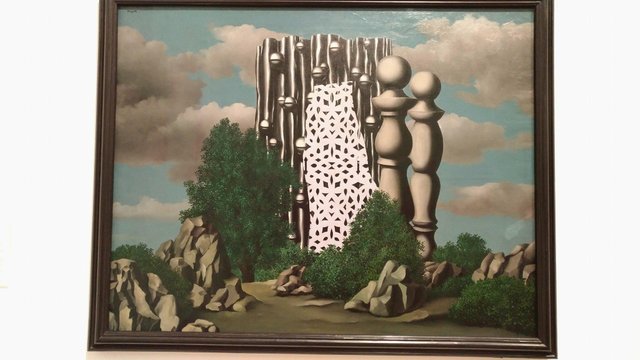
R. Magritte, The Annunciation 1930
The objects' enlargement and conjunction with the landscape creates a feeling of incongruity recalling the experience of dreams.
The next is quite famous, and is a classic example of the idea of a surrealist object:
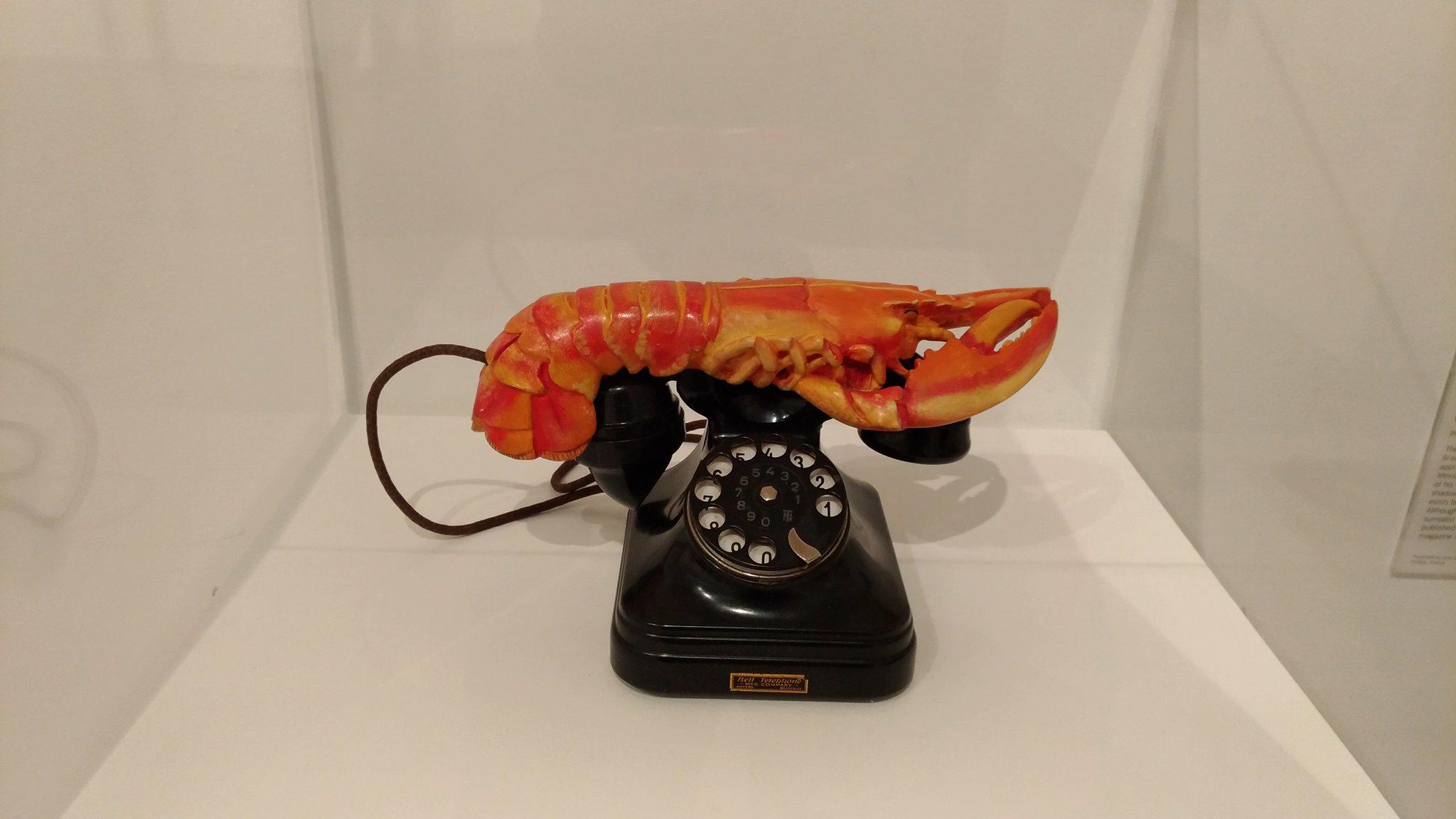
S. Dalì, Lobster Telephone 1936
Dalì believed that his objects could reveal the secret desires of the unconscious. For him, lobsters and telephones had strong sexual connotations, and he drew a close analogy between food and sex.
Ok, now let's move to the next display, titled 'Artist and Society'. In the first room we can see abstract works from different moments in the 20th century which reflect the aspiration to invent a new society.
Here's the first one that I liked:

P. Mondrian, Composition B (no.II) with Red 1935
Here the artist reduced the clour to a single red rectangle, giving the black lines greater importance as elements. The structure is slightly off-set, reflecting his opposition to the 'false ease' of symmetry in favour of the 'dynamic equilibrium of true life'.
The next work in the room I present to you is made of perspex and painted wood:
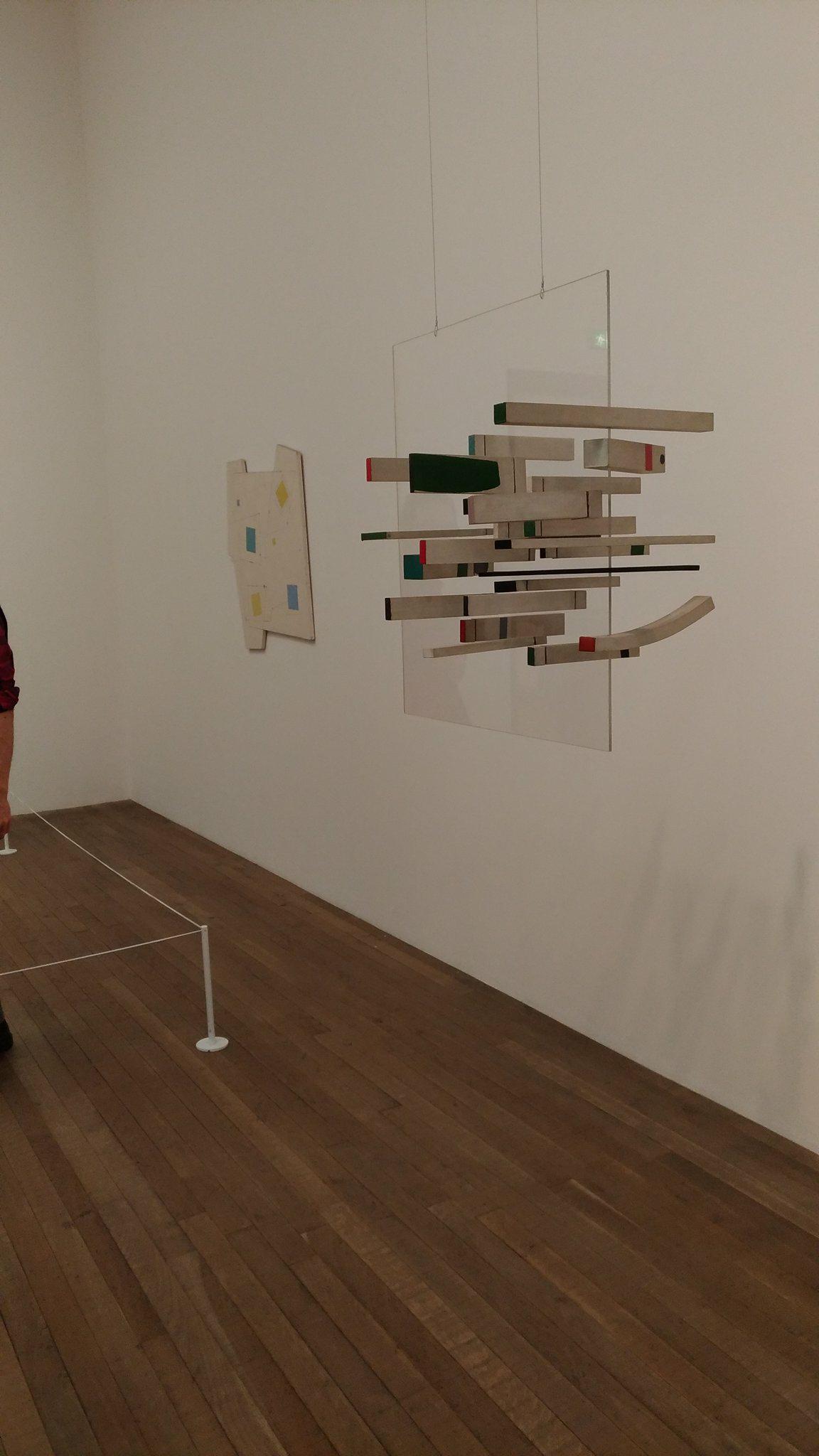
V. Pasmore, Abstract in White, Green, Black, Blue, Red, Grey and Pink 1963
In his reliefs Pasmore brought ideas of growth and abstract harmony into three dimensions. He rejected tilted elements in the relief because they' were not organic developments ofthe rectangles in the way that horizontals and verticals are.'
Let's move on to the next display, 'Materials and objects', where it is located a key artwork in the Tate collection, 'Fountain' by Marchel Duchamp:
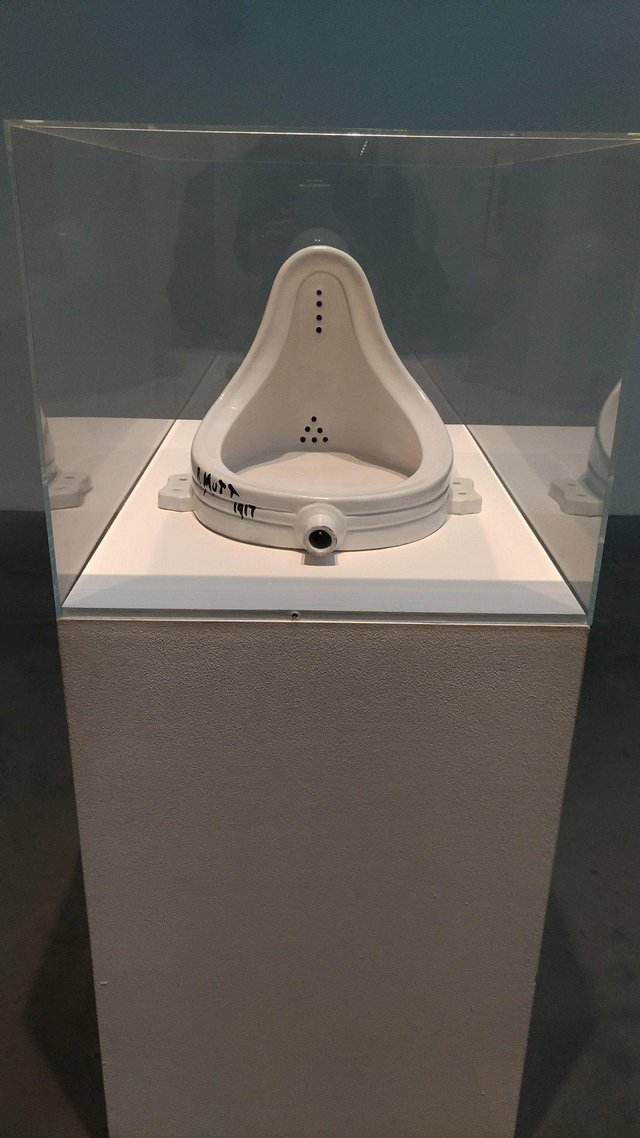
M. Duchamp, Fountain 1917, replica 1964
This is the most famous of Duchamp's so called 'readymade' sculptures - an ordinary object that has been designated by the artist as a work of art; challenging fundamental assumptions about what a work of art can be.
The next display gathers all the 'Recent acquisitions' of the museum.
The first work that struck me, is really huge:
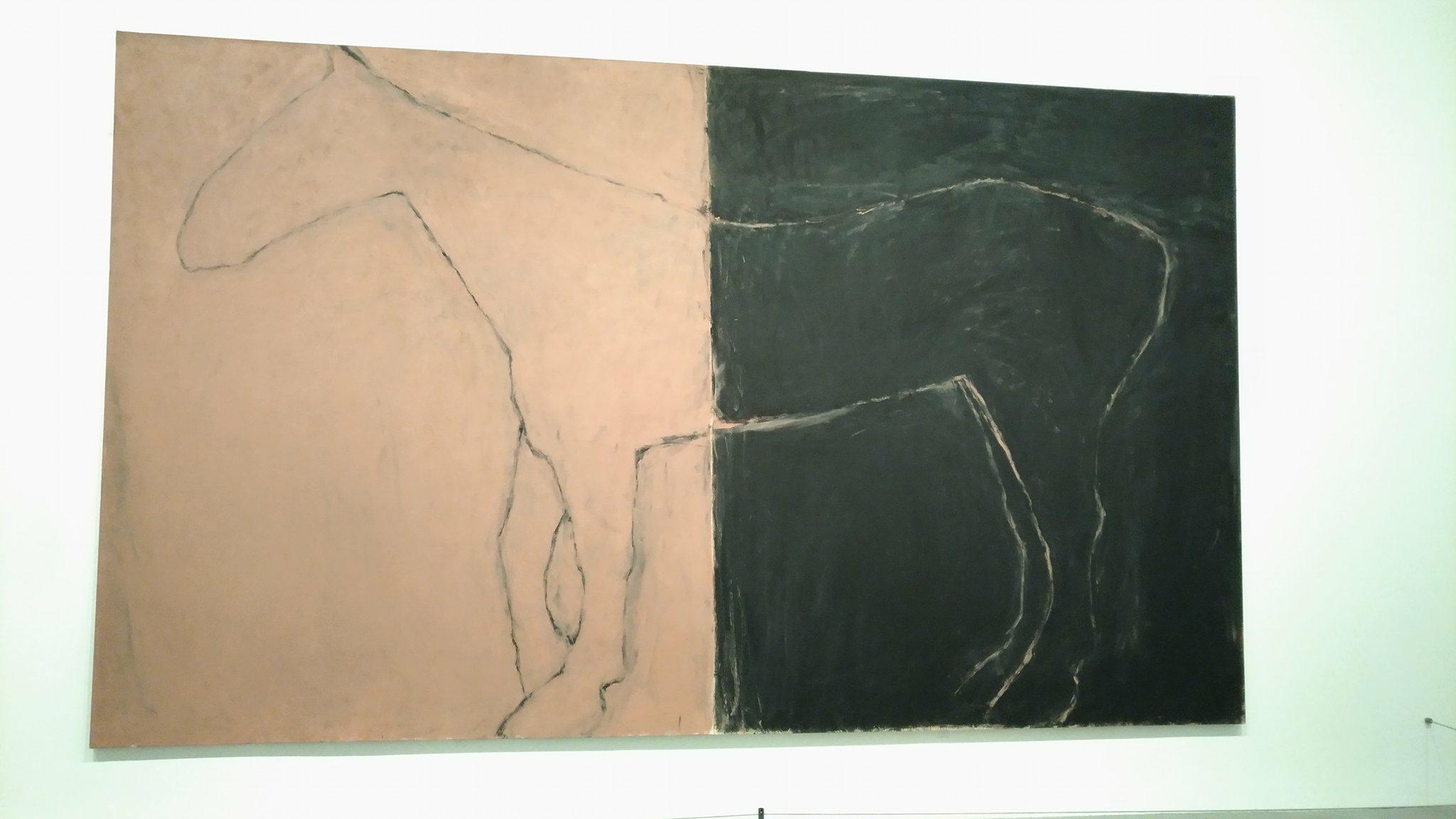
S. Rothenberg, United States 1975
Rothenberg made her breakthrough with a series of horse paintings in 1974-5. The title 'United States' may refer to the two sides of the composition. The way in which the canvas - and the horse itself - are divided is reminiscent of abstract painting.
The next one in this room is from Warhol:
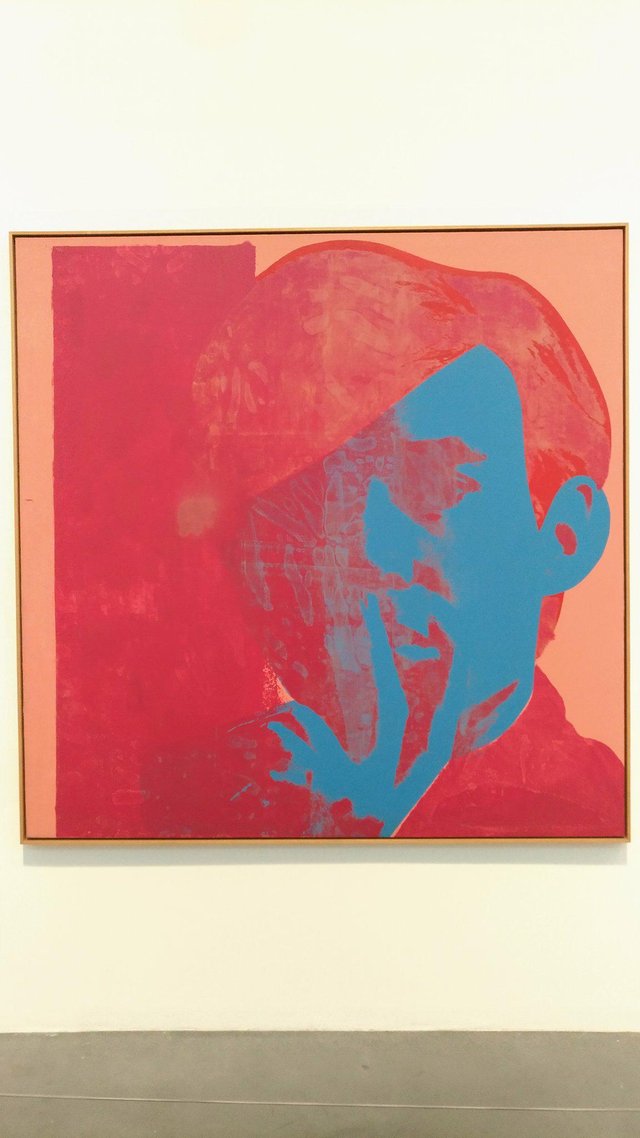
A. Warhol, Self-Portait 1967
In this, his likeeness remains recognisable but the image is painted in such a way as to minimise Warhol's human qualities. This reflects the intention to 'Completely remove all the hand gesture from art and become noncommittal, anonymous',
I wanna show you another Warhol's work, that is in the same room:
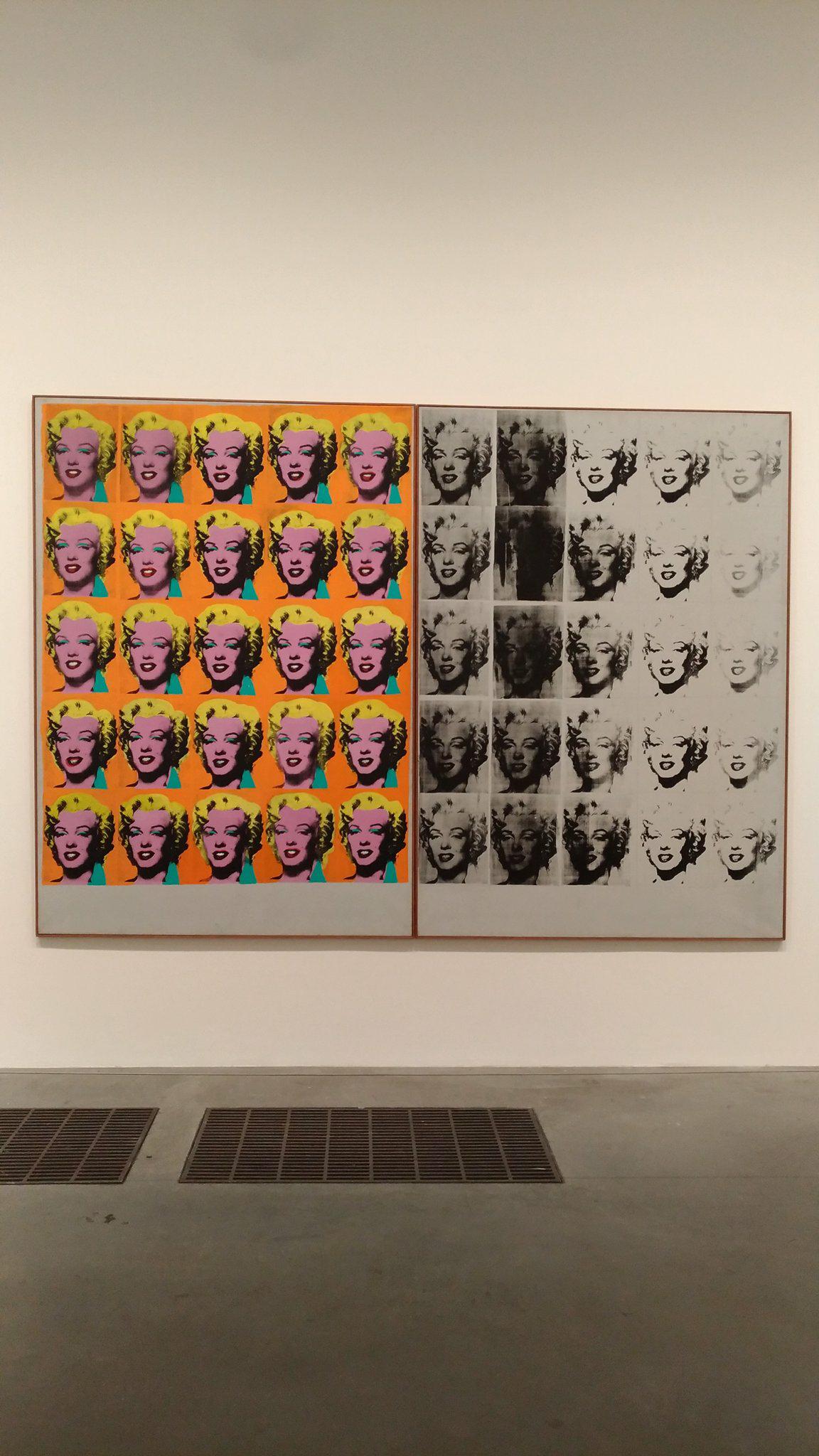
A. Warhol, Marylin Diptych 1962
Warhol made than 20 silkscreen paintings of Marylin, all based on the same publicity photograph from the 1953 film 'Niagara'. He found in Monroe a fusion of two of his constant themes: death and the cult of celebrity. The contrast of vivid colour with black and white, and the effect of fading are suggestive of the star's mortality.
The last work I present, is particularly close to me.
It's from Umberto Boccioni, and for the Italian public is easier to remember, because this work is reproduced on the back of the 20 cents Italian coins.
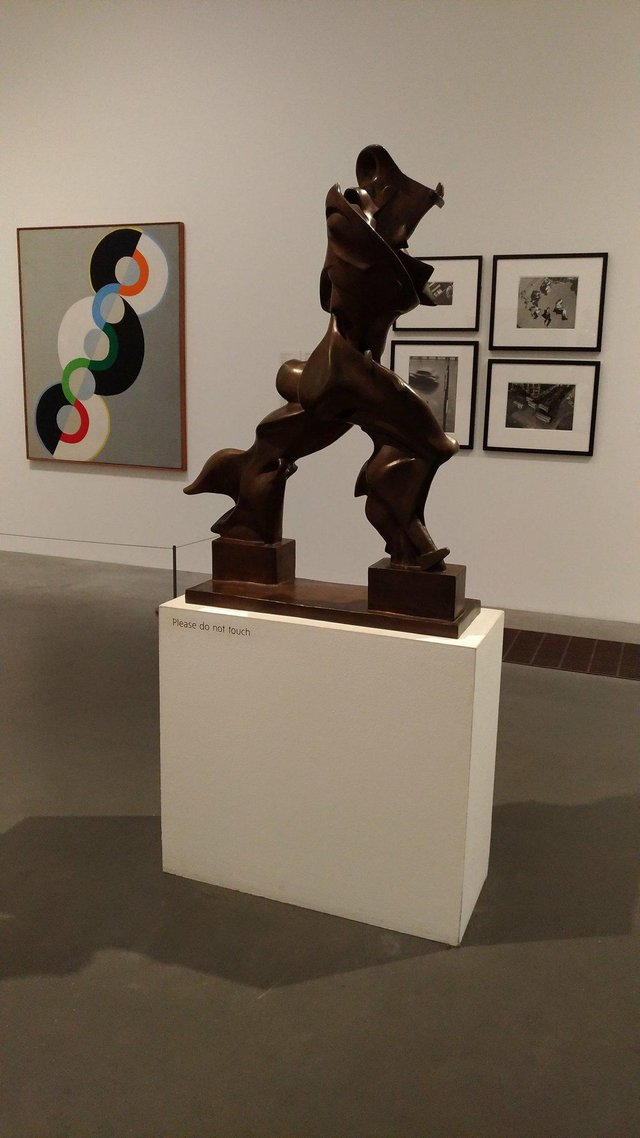
U. Boccioni, Unique forms of Continuity in Space 1913, cast 1972
Here, Boccioni rejects traditional sculpture to create this piece, considered one of the masterpieces of Futurism. The artist exaggerated the body's dynamism so that it embodied the urge towards progess. This is also one of my favorite works I've seen here at Tate, and best represents the values that the Futurists have expressed to the world at the beginning of the 20th century.
What is your favorite work? What do you think of these Dysplays?
Thanks for your attention, my dear Steemians, see you at the next article!
*Mauro*.
Congratulations @cryptomavro! You received a personal award!
Click here to view your Board
Do not miss the last post from @steemitboard:
Vote for @Steemitboard as a witness and get one more award and increased upvotes!
Congratulations @cryptomavro! You received a personal award!
You can view your badges on your Steem Board and compare to others on the Steem Ranking
Do not miss the last post from @steemitboard:
Vote for @Steemitboard as a witness to get one more award and increased upvotes!